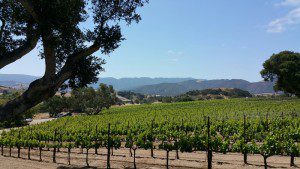History in a Glass with Chateau La Nerthe in Chateauneuf-du-Pape
This story was originally printed in the Napa Valley Register.I stood holding a glass of rosé wine at a recent wine lunch with Chateau La Nerthe when the export director Christophe Bristiel looked at me and told me that I was holding a glass of a wine that was 800 years old.
He did not mean that the actual wine in my glass was that old but rather that the rosé wine was from a winery dating to 1199. Prieuré de Montézargues was a monastery in Tavel, France and the French King had granted the monks the right to make wine. Today, the 84-acre property is owned by the Richard family who also own Chateau La Nerthe in Chateauneuf-du-Pape and Domaine de La Renjarde in Cotes du Rhone Villages.
After enjoying the structured Prieuré de Montézargues Tavel 2015 made with 55 percent grenache, 30 percent cinsault, 13 percent clairette and 2 percent of syrah, mourvedre, carignan and courboulanc and with its notes of strawberry and gooseberry, we sat down for lunch and to taste the wines of Chateau La Nerthe.








